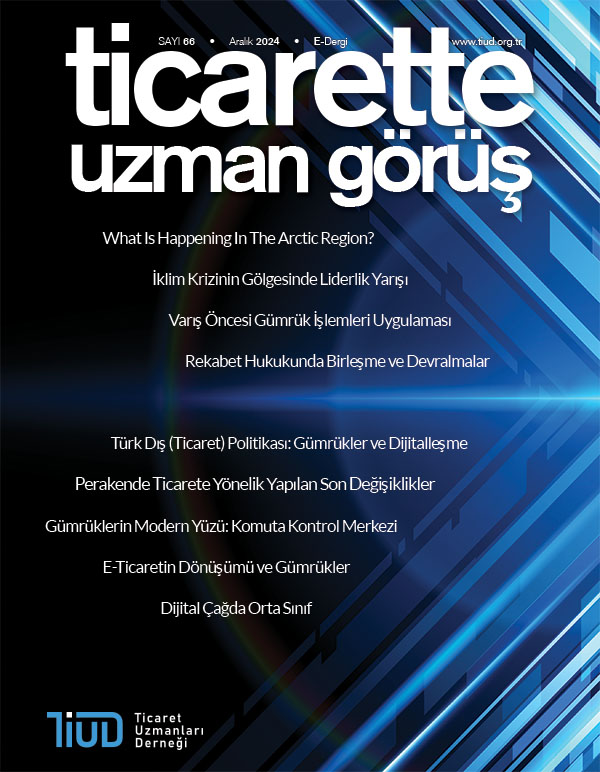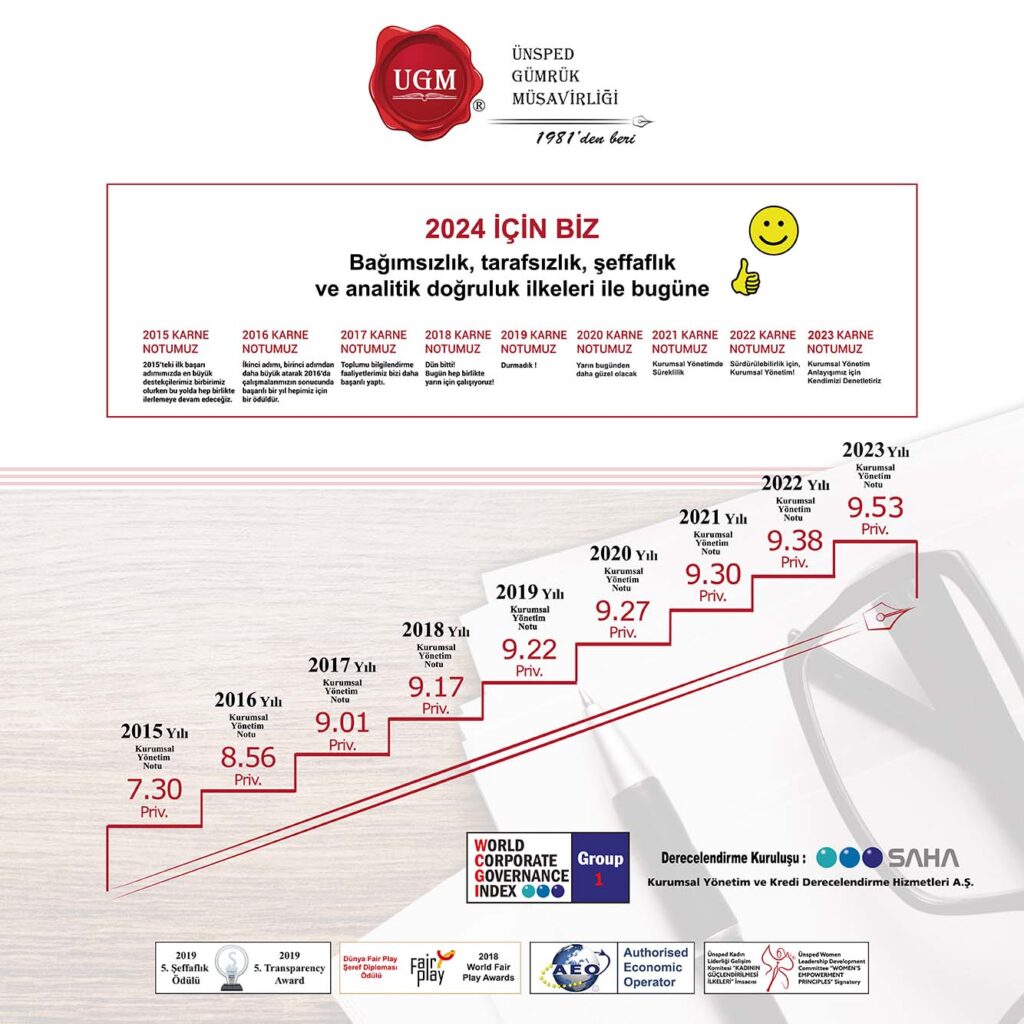-
Yeni Batı Mah. Palandöken Cad. No: 92 Yenimahalle/ANKARA
What Is Happening In The Arctic Region?
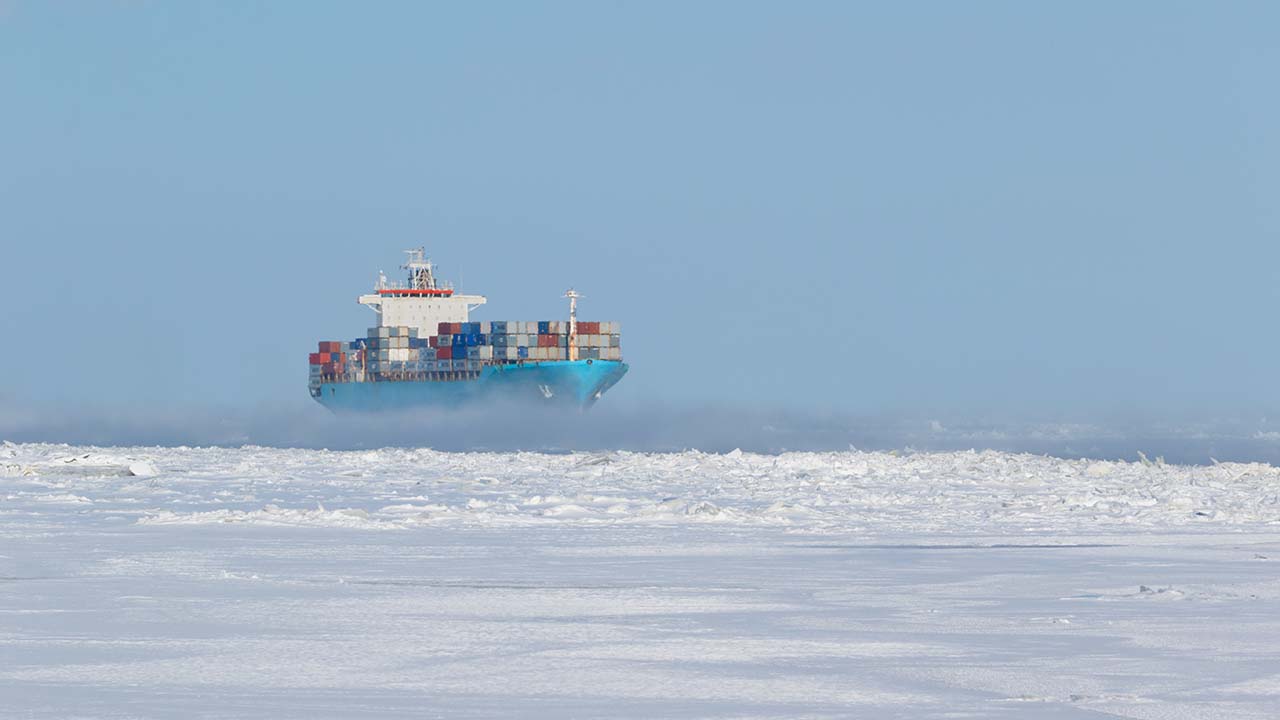
ABSTRACT
Every time we check our social media accounts, we come across something about global warming. We know that one of the most destructive reasons of global warming is melting ice bulks in the North Pole. On the other hand, nowadays media outlets instead of showing suffering polar bears on the pieces of glaciers, they are talking about new trade routes that is gradually forming in this region. It is time to talk what we have under the icebergs. In this article, we will point out what is happening around Arctic region in terms of new trade route what China calls The Polar Silk Road.
On 23 March 2021, we jumped out of our beds by hearing news about Ever Given that is the name of cargo ship which stuck in Suez Canal. This ship embarked on Netherlands to destinate China, but it couldn’t achieve. This incident led to six days off for Suez Canal and gave rise to around 60 billion dollars loss for global trade. Of course, this was not the first incident along Suez Canal, we saw many and we might see some in the future as well. What if we had alternative route from China to Netherlands instead of that route. Yes, we have more affordable and shorter route but in Arctic. Could this route present opportunities for Türkiye, China and Russia? Let’s dive into Arctic to find the answer.
Keywords: Türkiye, China, Russia, Arctic, Polar Silk Road
ÖZET
Sosyal medya hesaplarımızı her kontrol ettiğimizde, küresel ısınma hakkında yeni bir paylaşımla karşılaşıyoruz. Küresel ısınmanın en yıkıcı sebeplerinden birinin Kuzey Kutbu’ndaki buzulların erimesi olduğunu biliyoruz. Öte yandan, şu sıralar medya kuruluşları buzullar üzerinde acı çeken kutup ayıları yerine bu bölgede yavaş yavaş oluşan yeni ticaret yollarından bahsetmeye başladılar. Artık buzdağlarının altında ne olduğunu konuşma zamanı geldi. Bu makalede, Çinlilerin “Kutup İpek Yolu” olarak adlandırdığı yeni ticaret rotası: Arktik bölgesinde neler olduğunu ele alacağız.
23 Mart 2021’de, Süveyş Kanalı’nda sıkışan Ever Given adlı yük gemisiyle ilgili haberleri duyarak yataklarımızdan fırlamıştık. Bu gemi, Hollanda’dan Çin’e gitmek üzere yola çıkmıştı, ancak hedefine ulaşamadı. Bu olay, Süveyş Kanalı’nın altı gün kapanmasına neden oldu ve küresel ticarette yaklaşık 60 milyar dolarlık bir kayba yol açtı. Elbette, bu Süveyş Kanalı’ndaki ilk olay değildi; daha önce de birçok olay gördük ve gelecekte de görebiliriz. Peki ya bu rota yerine Çin’den Hollanda’ya alternatif bir güzergâhımız olsaydı? Tam da bu noktada, Arktik bölgesinde daha uygun ve daha kısa bir rotamız var. Bu rota Türkiye, Çin ve Rusya için fırsatlar sunabilir mi? Cevabı bulmak için Arktik’e bir dalış yapalım.
Anahtar Kelimeler: Türkiye, Çin, Rusya, Arktik, Kutup İpek Yolu
THE ARCTIC REGION
Previously viewed as a harsh and isolated region, the Arctic has unexpectedly become a major political focus point. The primary cause of this transformation is climate change, which causes the Arctic ice to melt quickly and opens up new routes for resource exploitation and marine travel. Given these events, China has been demonstrating a strong interest in the Arctic despite its great physical distance from it, making its Arctic ambitions clear through its Polar Silk Road project.
Figure 1: The World’s Key Maritime Points
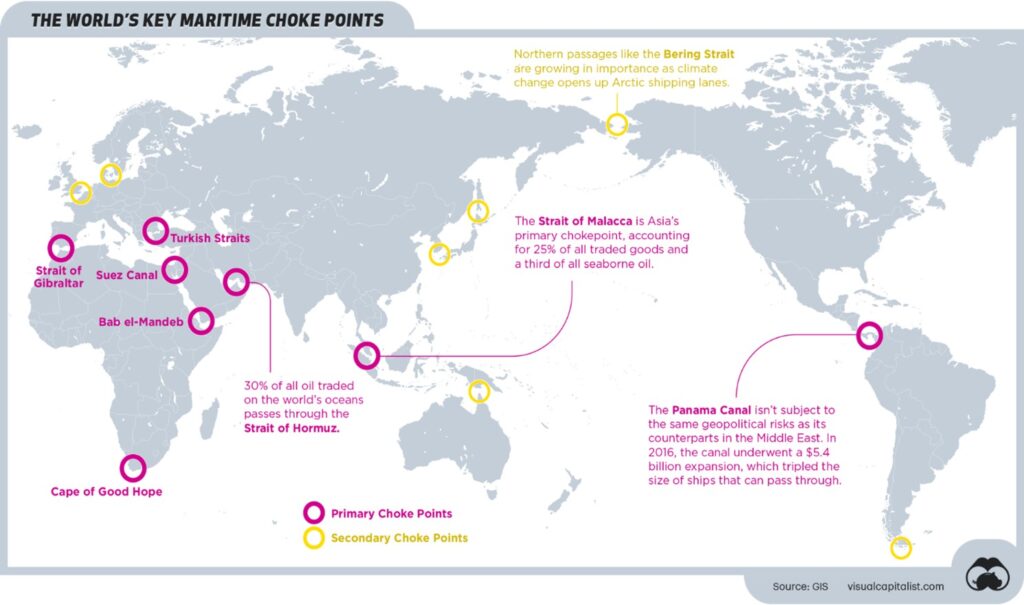
Once a remote and little-known location, the Arctic has become more well-known worldwide as a result of economic interests and the need to comprehend climate change. This transition has altered the character of exploration as well as its effects, calling for the development of infrastructure, cutting-edge technology, and international collaboration. As a result, nations are fighting to expand their influence and draw in foreign investments, making the Arctic a center of geopolitical cooperation and conflict, highlighting the continued dominance of national interests in the area (Ayaydın, 2022).
Once thought to be a remote and unreachable location, the Arctic has been becoming more and more important in international trade, especially in the East-West sector. The main cause of this shift is the significant decrease in travel distances made possible by the Arctic. Notwithstanding its negative effects, climate change has caused the Arctic Sea ice to melt widely, opening up new possibilities for commercial shipping. Compared to the current Suez Canal route, the Arctic’s Northern Sea Route (NSR) provides a travel distance between Asia and Europe that is up to 40% shorter. This might improve trade efficiency and spur economic growth in many European and East Asian countries (Yumashev et al., 2017).
Figure 2: Northern Sea Route
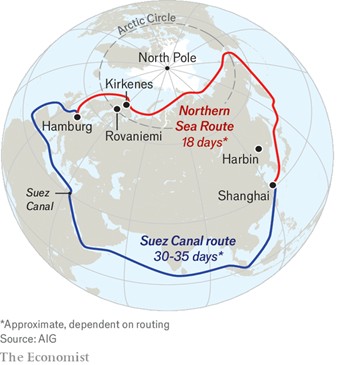
Analyst says that NSR would be ice free by 2050. After completing a voyage between Vladivostok and Kaliningrad, Ivan Fedyushin, second officer aboard a sailing vessel, reported a striking observation: the previously prevalent ice fields across the Bering Sea, Chukotka Sea, and East Siberian Sea had disappeared. This vanishing ice serves as a significant indication of a profound change in the Arctic’s accessibility for all types of vessels (Diplomat, 2024). A trip from China to Netherland takes around 33 days through NSR as opposed to 48 days via Suez Canal. This situation creates potential savings both for China and other nations those are interest in Arctic.
DRAGON’S AMBITION
In 1925 China signed Svalbard Treaty that allows parties’s commercial activities on Svalbard (the most strategic place in Arctic). This treaty recognizes sovereignty of Norway over Arctic Archipelago of Svalbard. Currently, there are 48 signatories to the treaty. (Wikipedia, 2024)
In 2018, China published a white paper titled China’s Arctic Policy. Beijing’s aim to grow Belt and Road Initiative through Polar Silk Road (PSR). As China is striving to become a global power, including in maritime and transportation domains, the Arctic is of interest to China. This time, dragon is coming with ice-breakers not the fire.
China’s Arctic policy was altered following the adoption of the PSR framework and three main objectives were determined: taking involvement in Arctic governance, enhancing common interests, and encouraging sustainable development. Nevertheless, the fundamental misgivings over the PSR are influenced by some of the Nordic states’ concerns, namely China’s population density. and its growing fascination with natural resources. Furthermore, a few of the nation’s include particularly mindful of China’s long-term strategic goals, including the potential for deployment the Arctic by a military presence. In this regard, China’s growing strategic collaboration with The Nordic states have not recently embraced Russia politically. Furthermore, some academic discussion additionally highlights that the NSR has become the PSR’s exact replica following China’s involvement in the region. (Tüter,2022)
In this sense, COSCO Shipping Specialized Carriers, one of the biggest Chinese shipping companies, organized 42 trips on the Northern Sea Route with 33 vessels between 2013 and 2021, 14 of which included icebreaker escort. COSCO reached a record-breaking 14 voyages along the Northern Sea Route in 2021, bringing the idea of a PSR further closer to reality. (Arcticinstitute, 2023)
On the other hand, Western countries, such as Canada and Denmark, have resisted China’s attempts to invest in rare earth mining projects and gold mines in the Arctic. However, as Western sanctions on Moscow have grown, China has expanded its investments in Russia to include projects in Russia’s Arctic sphere of influence. For example, in 2023, China made mining investments in titanium in the Russian Republic of Komi, a Russian federal territory. China’s manufacturing and technological industries depend heavily on the vast range of minerals found in the Arctic, particularly as the country aspires to continue its lead in electronics and renewable energy. (Harvey, 2024)
Chinese proverb says, crossing the river by touching the stones, it definitely works recently. China’s reform and opening up process depends on this phenomenon and she is giving to much attention to receive the maximum potential from this forgotten region.
KREMLIN’S STRATEGY
Russia is the country that have the most potential gaining from this region because of their proximity to Arctic. Given that Russia owes their solid economy to the natural gas and petroleum, it is easy to say Russia’s interest for this region is inevitable. The total amount of value lies down under this region is about 30 trillion $. Russia has invested this region that they recently opened new coal mining in Svalbard and placed their people even if they haven’t profited from this activity. They are doing this to have a right to say in this region. Also, they planted their national flag under the seabed in 2010. In addition, they applied several times to formal authorities so as to claim more continental shelf right in this region and they achieved to get it in 2019.
It’s important to highlight the number of icebreakers, as they play a crucial role in Arctic operations. Russia holds a significant advantage over other countries, with a fleet of 50 icebreakers. In comparison, Canada has only 7, the United States operates 5, and China possesses 3. This disparity gives Russia a considerable edge in navigating and controlling Arctic waters.
The NSR is so crucial maritime road in Russia’s Arctic strategy. In 2020, Russia adopted important strategic papers as regards its Arctic Strategy that lay down the key features of its policy and specific targets to be achieved during the next fifteen years. The most of vital aim of this policy is to advance the infrastructure development in the Arctic. However, the most challenging goal is construction of the new generation of vessels by 2035. In this sense, Russia’s aim is construct at least eight new nuclear icebreakers and port infrastructure investments. The strategy also envisions the use LNG as a fuel instead of NOx and Sox that cause to harmful effect to the environment.
In contrast to 31.5 million tons in 2019 and 32 million tons in 2020, Russia’s Arctic Strategy aims to increase NSR shipping turnover to 90 million tons per year by 2030 and 130 million tons per year by 2035. With only 2 million tons in 2030, international transit is predicted to make up a modest portion of the entire volume; by 2035, that number will rise to 10 million tons (from 0.7 million tons in 2019). Since sea transportation provides a practical substitute for conventional pipeline or rail transportation for many Russian oil and gas operations located in Russia’s Arctic, it is evident that the majority of shipments via NSR would be made up of exports of hydrocarbons. (Yermakov, 2022)
Figure 3: Volume of shipments via NSR, 2014-2020
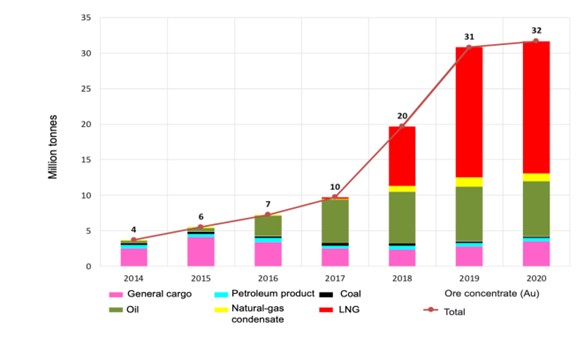
In 2020, 86 percent of total shipments via the NSR were represented by hydrocarbons going to export markets, including LNG (18.9 million tons), oil (7.7 million tons), and condensate (1 million tons). General cargos amounted to 3.5 million tons or about 11 percent of total shipment volume. Refined products (0.6 million tons) and coal (0.3 million tons) accounted for a relatively minor shares of 2 and 1 percent, correspondingly. (Yermakov, 2022)
Regardless of the possibility of its transformation into Euro-Asian Sea transport route, the mail aim for Russia is national priority. Today, the Arctic have crucial state interests-economic, defense, geopolitical, scientific and environmental. Until today, this route serves as an alternative way in order to supply not only equipment, construction materials, oil or hydrocarbons but also food for the local population. At the same time, the NSR has a huge geo-economic potential associated with the transformation of the waterway into an international transport highway, which remains a reserve of the international transport system. In turn, Russian’s interests are to reduce transport costs, increase the capacity of the icebreaker fleet, improve tax, customs and credit policies. (Gladkiv, 2020)
TÜRKİYE’S POTENTIAL
Türkiye’s interest to Arctic region goes back to 1990s, by acceding to the Antartic Treaty in 1995. Also, Türkiye signed Madrid Protocol in 2017, known as Antarctic Treaty Environment Protection Protocol. It is possible to talk about three stages on behalf of Türkiye’s interest in Arctic region (Yavaşoğlu, 2021):
- The Polar Research Center (PolReC) within Istanbul Technical University (ITU) was established in 2014.
- Starting in 2017, PolRec was started running its polar programs under the responsibility of the Ministry of Industry and Technology.
- In 2019, TUBITAK Marmara Research Center (MAM) Polar Research Institute (KARE) was established, and the polar coordination task was transferred from ITU PolReC to KARE.
- In 2024, Türkiye officially became a signature country to the Svalbard Treaty.
In 2018, The National Polar Science Program (2018-2022) was published by Türkiye. This document contains concrete goals like protecting Arctic, Antarctica and poles, establishing a roadmap for Türkiye’s accession to the Arctic Council, being members of international organizations related to polar regions. Upon these developments, it is obvious that Türkiye’s interest mostly depends on scientific research rather than economic aim.
When it comes to economic actions, it is hard to mention about any activities like operated by China and Russia in this region. On the other hand, Turkish shipbuilding industry is the seventh largest builder of new ships and the third largest builder of yachts in the world. Today, there are 84 active shipyards in Turkey. The Turkish shipbuilding industry has the ability to build various types of “ice class/polar class” ships, including research vessels for the Arctic and Antarctic Regions. Turkish Shipyards have already delivered many ships that have “ice class” notation in compliance with the requirements of clients and classification societies.
When compared to competitor countries, the Turkish shipbuilding industry has many advantages: infrastructure and technology, delivery period and production capacity, active shipyards (both for new building and repair and maintenance capacities), a wide range of products, qualified personnel, iron-steel industry support, a convenient geographical position (52 nations within a three-hour flying distance), and the Turkish shipbuilding recycling industries (Limon, 2021).
Apart from these factors, the Arctic region is home to hundreds of thousands of ethnically Turkic people, such as the Yakuts and Dolgans. In this respect, this situation can be catalyst to increase sphere of influence in this region.
LAST WORDS
Based on theorists, we would no longer see glaciers after 20 or 30 years in the Arctic. This situation renders nations hungrier in order to benefit from this region. Not only opening new commercial routes but also it gives rises to come out natural resources under the glaciers.
While the melting ice opens up new commercial pathways, it also exposes something even more essential to the future of our planet. The Svalbard Global Seed Vault is a seed bank in Arctic. The vault is home to save different kinds of plant seed. This vault serves as a global repository for plant seeds from around the world, preserving biodiversity against the threats posed by climate change. The contrast is sharp: as the ice melts and new trade opportunities emerge. It is sad to say this but it seems that the money would overweigh the climate change’s concerns among the nations.
REFERENCES
- Ayaydın, E. (2022). Evolution of Arctic Exploration from National Interest to Multinational Investment. In P. A. Berkman, A. N. Vylegzhanin, O. R. Young, D. A. Balton, & O. R. Øvretveit (Eds.), Building Common Interests in the Arctic Ocean with Global Inclusion: Volume 2 (Ser. Informed Decisionmaking for Sustainability (IDS), pp. 189–202), Springer.
- Gladkiy, Yu N, V D Sukhorukov, S Yu Kornekova, S V Kulik, and N V Kaledin. (2020) Polar Silk Road’: Project Implementation and Geo-Economic Interests of Russia and China. IOP Conference Series Earth and Environmental Science 434, no. 1: 012009.
- Limon, O. (2021) Arctic Interests and Policy of Turkey: Dilemmas, Approaches and Initiatives, Arctic Year Book.
- Tüter, Mustafa. “China’s Polar Silk Road: Opportunities and Challenges for Nordic Arctic”. International Journal of Politics and Security (IJPS), Vol. 4, No. 3, 2022, pp. 299-326, DOI: 10.53451/ijps.1152777
- Yavaşoğlu, H. Hakan. (2021). Bilim [Science]. In Burcu Özsoy (Ed.), Ulusal Kutup Bilim Seferleri Eğitim Kitabı [National Polar Science Expeditions Educational Book], 15-24. Kocaeli: Kutup Araştırmaları Enstitüsü.
- Yermakov V., Yermakova A. (2021) The Northern Sea Route: A state priority in Russia’s strategy of delivering Arctic hydrocarbons to global markets, The Oxford Institute for Energy Studies.
- Yumashev, D., van Hussen, K., Gille, J., & Whiteman, G. (2017). Towards a balanced view of Arctic shipping: Estimating economic impacts of emissions from increased traffic on the Northern Sea Route. Climatic Change, 143(1–2), 143–155.
- https://en.wikipedia.org/wiki/Arctic_policy_of_China, Accessed: 18/09/2024
- https://thediplomat.com/2023/11/arctic-ambitions-chinas-engagement-with-the-northern-sea-route/ Accessed: 01/10/2024.
- https://www.aa.com.tr/en/opinion/opinion-russia-and-china-s-arctic-ambitions-a-marriage-of-convenience/3358176# Accessed: 15/10/2024.
- https://www.thearcticinstitute.org/china-polar-silk-road-long-game-failed-strategy/ Accessed: 24/10/2024.
Yazar Hakkında
Çankaya Üniversitesi Siyaset Bilimi ve Uluslararası İlişkiler Bölümü’nden 2012 yılında mezun olmuştur. Lisans öğrenimi esnasında ayrıca Mütercim ve Tercümanlık (İngilizce) alanında yan dal programını tamamlamıştır. Bakanlıktaki çalışma hayatına 2014 yılında uzman yardımcısı olarak başlamıştır. Yine aynı üniversitede İnsan Kaynakları Yönetimi alanında tezli yüksek lisansını tamamlamış olup akabinde Anadolu Üniversitesi Maliye bölümünde doktora çalışmalarını sürdürmüştür. 2022 yılında İspanya’nın Jaen şehrinde Zeytinyağı alanında uzmanlık eğitimi almıştır. Bakanlıkta Uluslararası Zeytin Konseyi iş ve işlemleri alanında çalışmaktadır. 2023 yılında Çin Halk Cumhuriyeti Ticaret Bakanlığı’nın bursunu kazanarak gittiği Pekin Normal Üniversitesi Kuşak ve Yol Enstitüsü’nde tezli MBA programına devam etmektedir. Kuşak ve Yol Girişiminin kurucularından eğitim alan yazar bu alanda uzmanlaşmış olup iyi düzey İngilizce ve İspanyolca ile temel düzeyde Çince (Mandarin) bilmektedir.
İçindekiler

Yönetim Kurulundan

Yayın Kurulundan
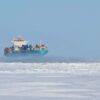
What Is Happening In The Arctic Region?

İklim Krizinin Gölgesinde Liderlik Yarışı

Varış Öncesi Gümrük İşlemleri Uygulamasının Değerlendirilmesi

Rekabet Hukukunda Birleşme ve Devralmalar

21. Yüzyılda Türk Dış (Ticaret) Politikası: Gümrükler ve Dijitalleşme

Perakende Ticarete Yönelik Yapılan Son Değişiklikler

Gümrüklerin Modern Yüzü: Komuta Kontrol Merkezi

E-Ticaretin Dönüşümü ve Gümrükler

Dijital Çağda Orta Sınıf
Ticaret Uzmanları Derneği (TİUD), Ticaret Uzmanları ile Uzman Yardımcılarının dayanışma ve birlikteliğini geliştirmeyi, ortak hak ve menfaatlerini korumayı, mesleki, sosyal ve kültürel gelişimlerine katkıda bulunmayı amaçlayan bir sivil toplum kuruluşudur.



